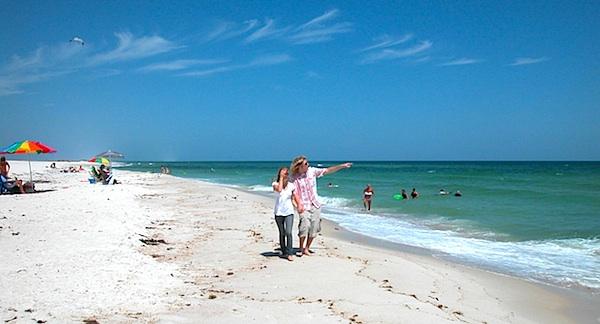
Warm Gulf waters make Gulf Islands National Seashore an enticing destination/NPS
The warm Gulf waters are the main attraction at Gulf Islands National Seashore, but anyone with an interest in American history ' from the Colonial days up through World War II ' will find a reason to visit as well.
Sugar-sand beaches and Gulf waters are the big lure for the seashore, which is spread across Mississippi and Florida in the form of six distinct areas in each state. Those brilliant white sands originated in the Appalachian Mountains far to the north. Erosion swept grains of quartz into rivers and streams that carried them into the Gulf of Mexico, where wave action deposited them here.
Beach lovers should know that crowds are greatest during June, July, and August, as well as during spring break in March. On those warm and sunny days of spring and summer, the Pensacola Beach can generate traffic jams, too. But if your schedule is flexible, September and October are two of the best months to visit. You'll encounter fewer crowds, continued nice weather, and the always enticing water. Fall and spring are good seasons for birders to visit, as they bring many migratory species (Yellow warblers, Pine warblers, Eastern towhees, and Scarlet tanagers just to name a few) to Gulf Islands National Seashore.
The seashore's military history dates to the mid-1700s, when the British built the Royal Navy Redoubt on the mainland of today's national seashore near Pensacola. The Spanish had a fortified foothold on the mainland too, around 1797, before the fledgling United States took control with masonry Fort Barrancas, built between 1839 and 1844. The United States also built Fort Pickens on Santa Rosa Island in 1834 to protect Pensacola and the naval yard from foreign invasion. Though Florida was far from the frontier involved in the Indian Wars in the 1880s, when Geronimo and other members of the Chiricahua-Apache tribe were captured they were imprisoned for 18 months at Fort Pickens.
Today's visitors interested in military firepower should visit Fort Massachusetts on West Ship Island, where you can find a 19th-century, 15-inch Rodman cannon. This 25-ton cannon, capable of propelling a 400-pound shell three miles, features a bottle-shaped barrel that had been cooled from the inside out at the foundry. This technique made these canons stronger than others.
If You Go
Be sure to check out the Naval Live Oaks area of the seashore east of Gulf Breeze, Florida. President John Quincy Adams in 1828 designated this as the first government tree farm. Live oaks were treasured for the density of their wood, which also was disease resistant, in construction of naval vessels. Fort Massachusetts' durability was showcased during Hurricane Katrina in August 2005. Storm surges rising to 30 feet overran the fort, which since has reopened to the public. You'll need a boat, or a ferry ticket, to reach West Ship Island and Fort Massachusetts.



Comments
I suggest that you stay as close to the park that you can afford. The traffic in the summer is "challenging" but the park is beautiful.
Danny Bernstein www.hikertohiker.com